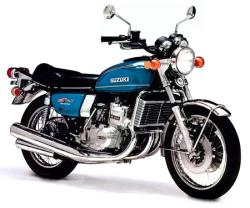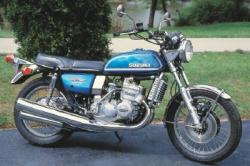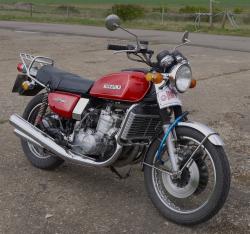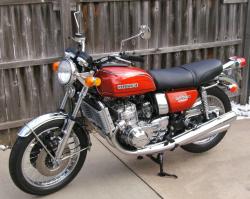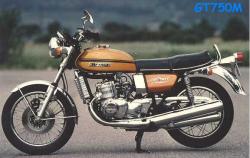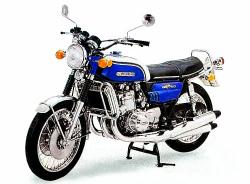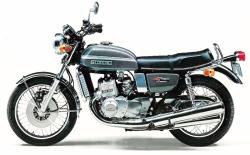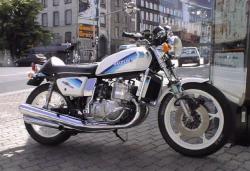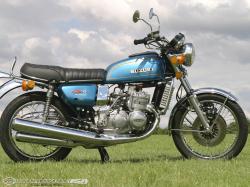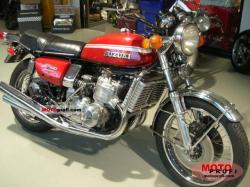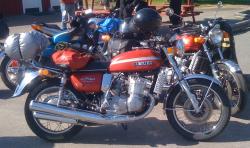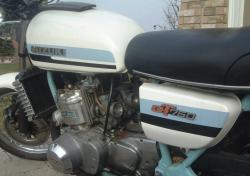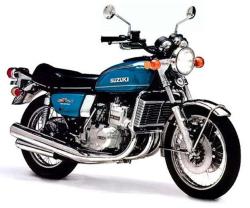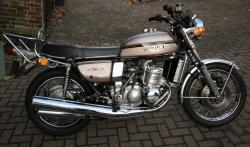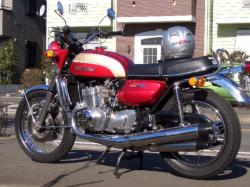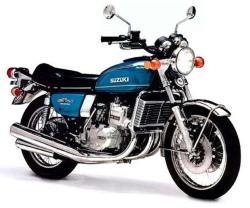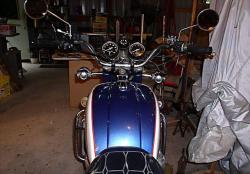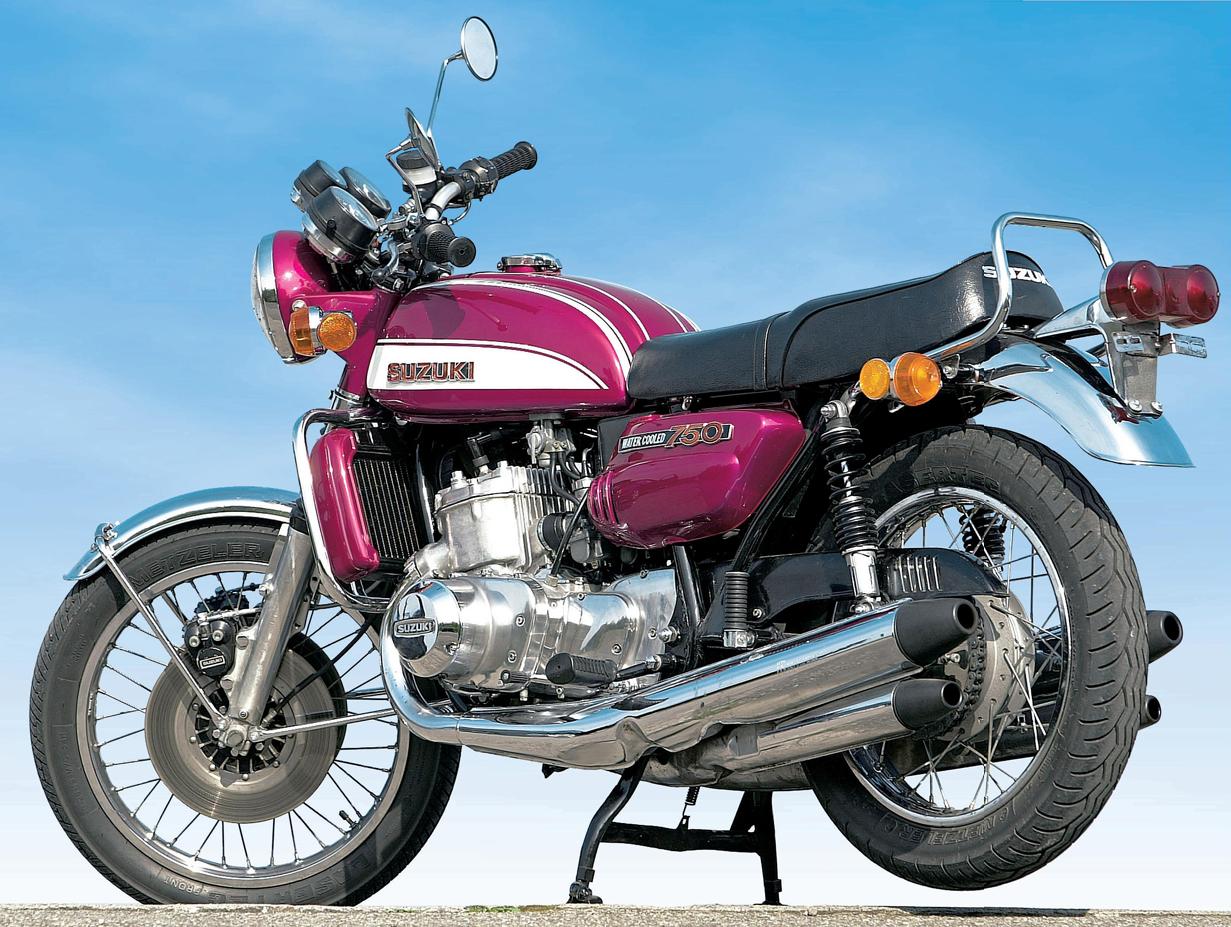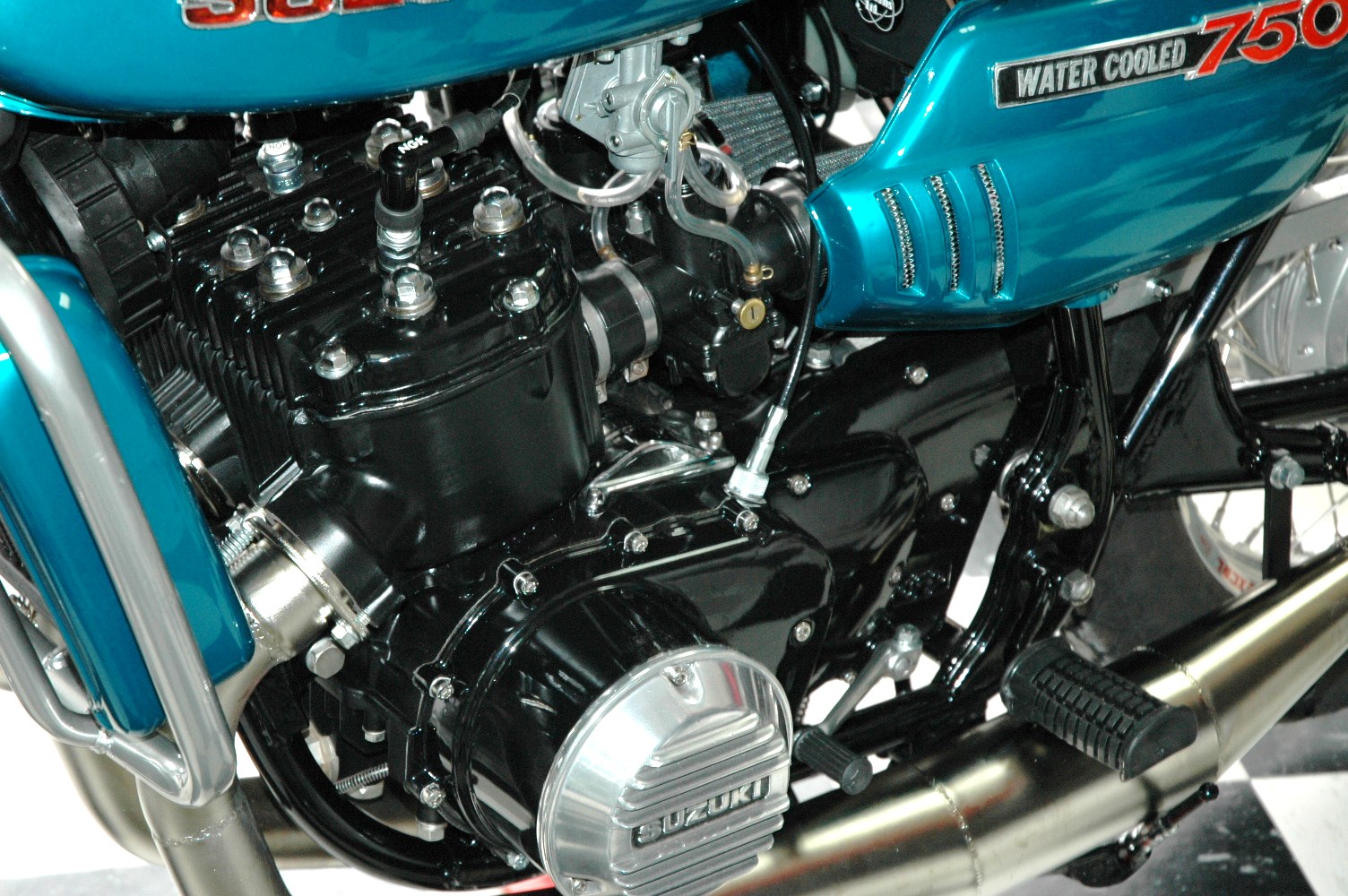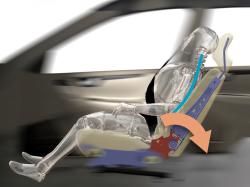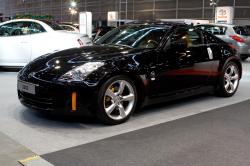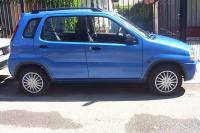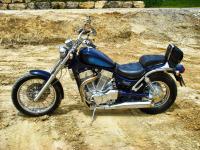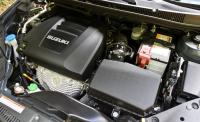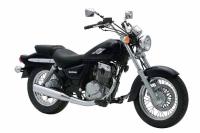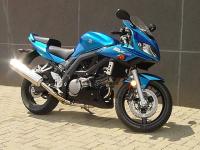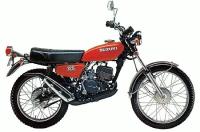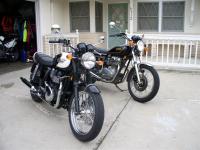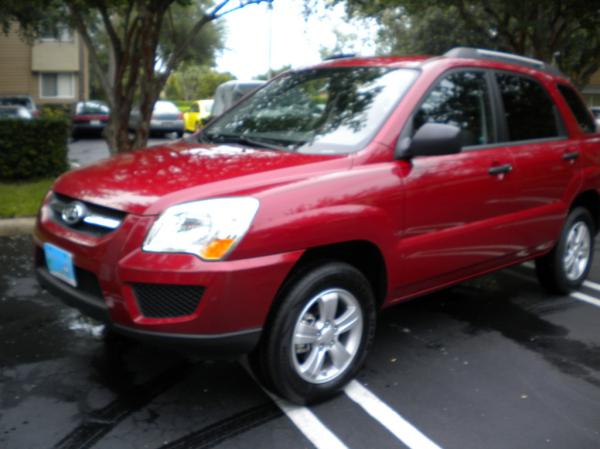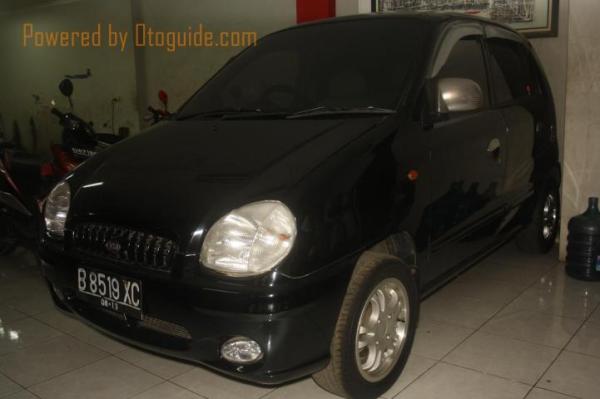Combined with direct oil injection, the Suzuki was a sophisticated motorcycle in its day. However, in the middle 70s, motorcycle emissions were coming under greater control in most countries, and the GT Suzuki was considered to be one of the worst (most polluting) vehicles on the road at the time. Suzuki developed the GT750 from its 500cc two stroke models, although it’s fair to say both owed a huge debt to DKW who were racing two-stroke triples back in the mid-50s. The GT750 was the first Japanese serial manufactured motorcycle with a liquid-cooled engine. It was a unique engine construction in its day and today considered one of the classic Suzukis, loved by its owners. Known as the Le Mans in America, it received soon a nickname “Water Buffalo”, and other nicknames in other countries.
It was generally known as “Kettle” in Britain and “Waterbottle” in Australia. This huge, wide engined bike, which weighed in at 550 lbs, was about 30 lbs heavier than a Kawasaki Z1. The 739cc engine was an inline water-cooled triple with 70 x 64mm bore and stroke. The cylinder block was alloy with cast iron liners.
sponsored:
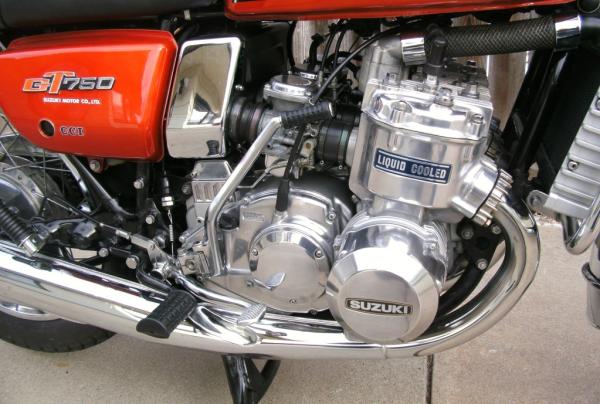
Suzuki GT750
Review of other vehicles
Volvo S60 is a small executive car manufactured by Volvo of Sweden from 2000. Till date Volvo has produced 2 generations of S60 sedans. Volvo’s P2 platform was used to produce the S60 and other vehicles to share the platform include the S80, V70, XC70 and XC90...
Read more...
The Volvo V40 is from the small car segment and manufactured by Volvo Cars. It is available in 5-door hatchback after it was debuted in 2012 Geneva Motor Show. The car was designed by Chris Benjamin, American designer, and the last to be designed under Horbuury before he moved to Geely, Volvo’s parent...
Read more...
Technically speaking Nissan 350Z is far superior than the other brands in terms of providing the horsepower of 287hp along with providing the front and rear spoilers that would function well for eliminating the front and rear lift thus cutting the drag efficient straight away from 0...
Read more...
